Over the course of the summer, we’ve seen the Toronto Maple Leafs essentially overhaul their defence. The dynamic Tyson Barrie was acquired from the Colorado Avalanche alongside Alexander Kerfoot, while Cody Ceci was swapped out for Nikita Zaitsev in a trade with Ottawa. Meanwhile, Ron Hainsey and Jake Gardiner were allowed to walk to free agency, with the latter inexplicably remaining unsigned.
Along with some additional depth moves, all of this points to a Maple Leafs defensive corps that will look very different this coming season: Just three of the team’s top-six defenders remain. But is different necessarily better?
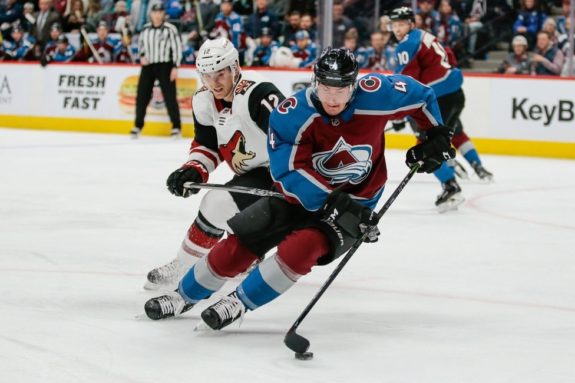
Roster Makeup and Projected Lines
Overall, the Maple Leafs are looking at a defensive lineup that is much more mobile and efficient at moving the puck: Morgan Rielly, Barrie, Jake Muzzin, Travis Dermott, and even Ceci are all above average to elite puck movers. Compare that to last season where the Leafs had just three puck movers in Rielly, Gardiner, and Dermott. With Hainsey and Zaitsev in the top-four, the right side of their defence was notably weaker and was often an easy target for opposing teams. But now with Barrie and ideally Dermott occupying top-four positions on the right, they’ve plugged that weakness.
This transformation was surely a conscious decision made by the team’s forward-thinking general manager Kyle Dubas. The Maple Leafs are already an offensive powerhouse, and the quicker their defencemen can move the puck up to their forwards, the more success they’ll have.
Roster Makeup
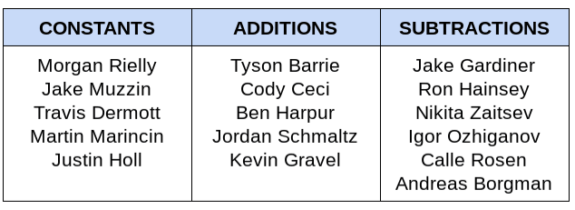
Of the defencemen that left this summer, Hainsey and Zaitsev were never strong puck movers. They were certainly average to above average at in-zone defence, but you could argue that they had to defend more than necessary because they threw the puck away so often, rather than making accurate breakout passes. By removing them from the equation, the Maple Leafs are sacrificing some defensive stability in exchange for better transitional play, theoretically leading to more possession and goals.

Despite his rocky reputation in Toronto, Gardiner will certainly be the player that the Maple Leafs miss the most this coming season. He’s been one of the best even-strength defencemen in the league over the past three seasons, primarily due to his ability to calmly handle forechecking pressure and move the puck accurately up the ice. He was the perfect type of defenceman for the Maple Leafs’ system, and that might be why people are still speculating about a possible return to Toronto.
The 22-year-old Dermott will likely be expected to take a step forward in his development once he returns from injury. He’s dominated in a sheltered third pairing role over his first two seasons, and depending on how he plays, he may see a promotion to the second pairing.

Projected Defensive Pairs
Perhaps the biggest question mark will be how head coach Mike Babcock decides to structure his lineup. Rielly and Barrie are nearly identical players in that they contribute a lot of offence but not much defence, so they, logically, should be separated. Muzzin with Barrie looks to be the most logical first pairing as it combines Muzzin’s calming presence with Barrie’s offensive firepower, but with Dermott out until at least November, that leaves a gap next to Rielly on the second pairing.
Ceci has historically been an extremely poor defender throughout his career with Ottawa, but his $4.5 million salary certainly doesn’t scream third-pairing player. He is likely the Maple Leafs’ fourth-best defender, and best candidate for the second pairing role, at least until Dermott returns. Based on shot metrics, a Rielly/Ceci combination would become one of the worst defensive pairings in hockey, so it’s probably not something the team will want to sustain long-term. For Maple Leafs fans, the hope is that Dermott returns as soon as possible and shows that he can handle top-four minutes, relegating Ceci to a more appropriate third-pairing role.
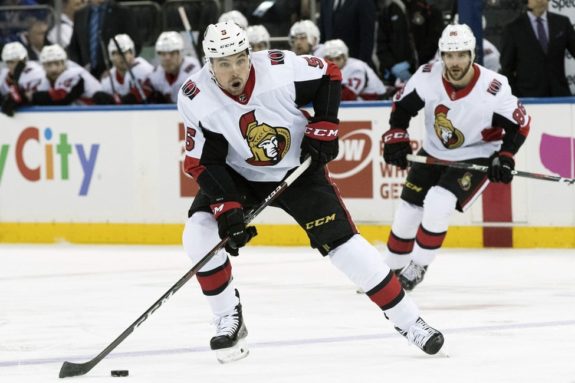
That said, here’s my best guess at an optimized Maple Leafs’ defence once Dermott returns from injury. Marincin is the biggest question mark as the final roster spot will likely come down to who has the best showing at training camp. Players like Justin Holl, Jordan Schmaltz, and even 20-year-old Timothy Liljegren may also be in the mix.

This Season vs. Last Season by the Numbers
We now know what the Maple Leafs’ defensive unit will look like compared to last season: they’ve added significant offensive puck-moving ability in Barrie and Ceci while subtracting one of their best all-around defenders in Gardiner and two defensive specialists in Hainsey and Zaitsev. The question then, is how will this new lineup actually perform? Will it be an improvement over last season’s configuration?
I dug through the numbers and aggregated some relevant statistics for the top-six members of Toronto’s defence in 2018-19 and the projected top-six for 2019-20. I only looked at performance from the past season, so obviously, these projections will not account for player development or regression. Here’s how the two lineups compare.
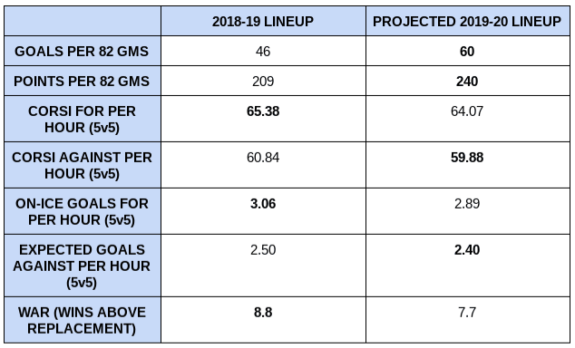
Now it’s important to remember to take these numbers with a grain of salt – mostly because the Maple Leafs are adding two new players and we can’t be certain how they’ll adjust to a new system. But the cursory results are somewhat encouraging.
The new defensive lineup should produce significantly more individual goals and points, mostly thanks to Barrie. Their possession figures look to be similar to last season, even with the addition of the defensively leaky Ceci. In regards to goals, it’s worth noting that both Colorado and Ottawa scored fewer goals than the Maple Leafs last season, so you could argue that the projected lineup will see a better on-ice goals for rating after Barrie and Ceci get a chance to play with Toronto’s high-powered offence. Barrie’s 5v5 on-ice goal rate was just 2.74 per hour last season, compared to Rielly’s insane mark of 3.95 – good for second-best in the league among defensemen. You have to think that Barrie will enjoy a more fruitful offensive season alongside Toronto’s elite offensive group.

Finally, Sean Tierney’s WAR model projects last season’s defence to be one win better than the current lineup, but that’s largely due to the absence of analytics darling Gardiner, coupled with Ceci’s poor shot and goal metrics with the Senators. The Maple Leafs will certainly be hoping that Ceci can rebound in a more suitable role on a better team.
Play Styles and Team Systems
One thing we know about the Maple Leafs is that they love to utilize the stretch pass, and with the additions of Barrie and Ceci, that strategy will likely become even more successful for them. Through the 2017-18 season and the first portion of 2018-19, the Maple Leafs utilized the stretch pass more than any other team in the league. And while they had among the lowest rate of success, they also had the second-most completions.
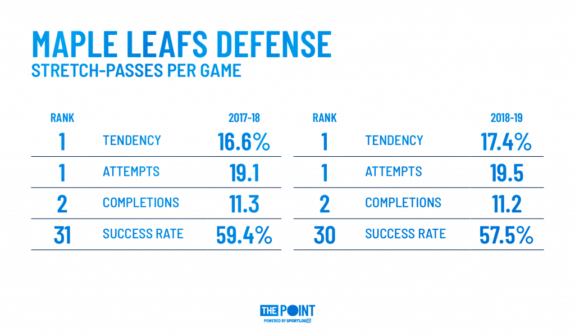
We can debate over how effective of a breakout strategy the stretch pass really is (it’s probably better than you think), but either way, we know that the Maple Leafs will continue to employ the tactic as long as Babcock is behind the bench. Both Barrie and Ceci excel at utilizing the stretch pass, and it’s likely a major reason they were targeted by Toronto.
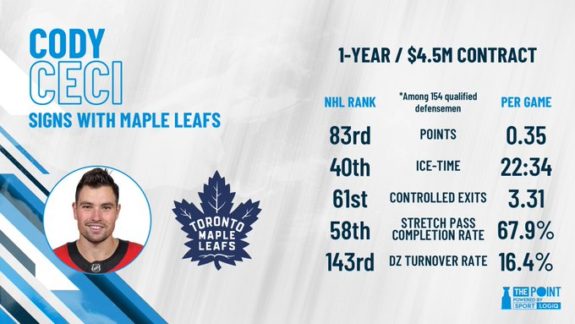
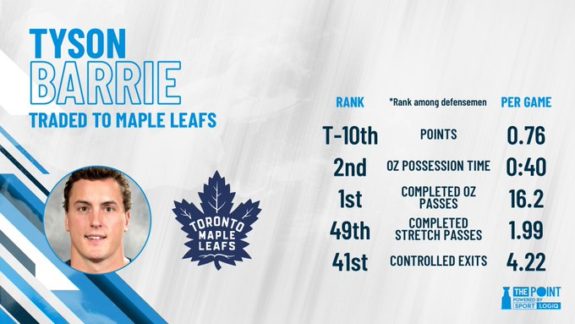
Ranking 49th among defensemen in completed stretch passes and 41st in controlled zone exits, Barrie is in the upper-echelon when it comes to breaking out with possession. And for all of his warts, Ceci is at least above average when it comes to executing the stretch pass and transitioning the puck out of his zone.

Corey Snajder’s manually tracked microstats tell a similar story. Barrie is in the top-15 percent of defencemen when it comes to exiting his zone and entering the offensive zone with possession. Ceci doesn’t attempt to exit his zone often (he likely defers to his partner), but when he does he’s relatively successful. He’s also in the top quartile with respect to entering the offensive zone with control.
Coupled with an already strong puck-moving core of Rielly, Muzzin, and Dermott, it’s clear that the Maple Leafs are going to be much better this season with respect to transitioning the puck out of their zone. By adding two capable puck-movers in Barrie and Ceci, they’ll be able to generate even more quick-strike offence than before.

The probable thought process from Dubas is that the more you have the puck, the less likely you are to be scored on; as they say, the best defence is a good offence. And that’s exactly the philosophy that the high-flying Maple Leafs will employ this coming season.
Stats from https://www.hockey-reference.com/ and http://www.naturalstattrick.com/